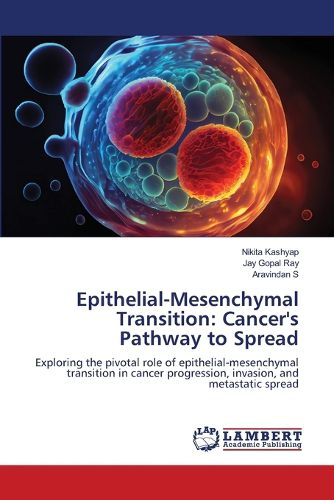Readings Newsletter
Become a Readings Member to make your shopping experience even easier.
Sign in or sign up for free!
You’re not far away from qualifying for FREE standard shipping within Australia
You’ve qualified for FREE standard shipping within Australia
The cart is loading…






Epithelial-mesenchymal transition (EMT) is a vital biological process in which epithelial cells transform into mesenchymal cells, gaining migratory and invasive capabilities. This reversible process plays a critical role in embryonic development, wound healing, fibrosis, and cancer metastasis. EMT is regulated by key signaling pathways, including TGF-?, Wnt, and Notch, and orchestrated by transcription factors like Snail and Twist. In cancer, EMT facilitates invasion, metastasis, and therapy resistance, marking it as a significant factor in tumor progression. EMT also contributes to cancer stem cell formation and immune evasion. The interplay between EMT and mesenchymal-to-epithelial transition (MET) underscores cellular plasticity in metastasis, where cells revert to epithelial states in secondary sites. Recent advances in targeting EMT therapeutically-such as inhibitors of TGF-? and EMT transcription factors-offer hope for reducing metastasis and improving treatment outcomes. This work explores the molecular mechanisms and clinical implications of EMT, emphasizing its dual roles in physiology and pathology.
$9.00 standard shipping within Australia
FREE standard shipping within Australia for orders over $100.00
Express & International shipping calculated at checkout
Epithelial-mesenchymal transition (EMT) is a vital biological process in which epithelial cells transform into mesenchymal cells, gaining migratory and invasive capabilities. This reversible process plays a critical role in embryonic development, wound healing, fibrosis, and cancer metastasis. EMT is regulated by key signaling pathways, including TGF-?, Wnt, and Notch, and orchestrated by transcription factors like Snail and Twist. In cancer, EMT facilitates invasion, metastasis, and therapy resistance, marking it as a significant factor in tumor progression. EMT also contributes to cancer stem cell formation and immune evasion. The interplay between EMT and mesenchymal-to-epithelial transition (MET) underscores cellular plasticity in metastasis, where cells revert to epithelial states in secondary sites. Recent advances in targeting EMT therapeutically-such as inhibitors of TGF-? and EMT transcription factors-offer hope for reducing metastasis and improving treatment outcomes. This work explores the molecular mechanisms and clinical implications of EMT, emphasizing its dual roles in physiology and pathology.